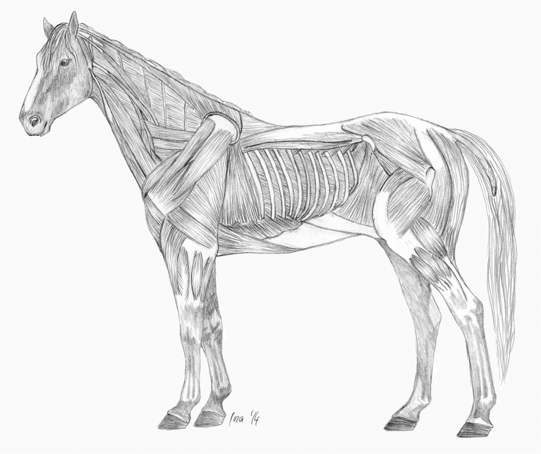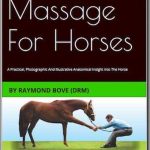
Muscle origin – the attachment of a muscle tendon to a stationery bone.
Muscle insertion – the attachment of the other tendon to the moveable bone.
Muscle belly – the fleshy (middle) portion of the muscle between the tendons of the origin and insertion.
Muscle contraction – shortening of the muscle.
Muscle release – to unfold, lengthen and correct.
Blood vessels transport oxygen and nutrients to the muscles of the horse. They also remove carbon dioxide, wastes and heat from the muscles. Tight, tense or contracted muscles hinder this function.
Blood vessels are essential in getting blood to each muscle fibre. On exertion we have a 60% increase in blood flow and this allows for all muscle fibres to have the energy to contract for a period of time.
When a horse rests not all blood vessels are used.
Muscles tighten up with increased levels of fitness and conditioning.
Each muscle fibre is connected to a nerve fibre. The nerve sends a message from the Central Nervous System (brain and spinal cord) to the muscle telling it when to contract and when to relax. Disorders of the nervous system can cause decreased or loss of muscle tone, loss of tendon reflexes, stiffness and muscle tension.
Tension in muscles can impinge on nerves causing pain, both local and referred.
When muscles are tense or stressed they shorten, as does the connective tissue (fascia) that surrounds them. This causes bones to be closer to each other than normal thus restricting movement and flexibility.
When under trauma or stress, muscles will always tighten. When muscles become tight and tense, then other muscles (or groups of muscles that make a particular movement possible) work harder to keep the horse going as well as possible, another form of homeostasis.
MUSCLE TONE IN A COMPETITIVE HORSE IS IMPORTANT AND WHEN WE LOOK AT HORSES THE MOST OBSERVED PART IS THEIR MUSCULATURE.
If a horse is ridden with muscular tension then knots in the muscle form causing stress points. These become hard areas of muscle and place pressure on muscles. The muscle fibres in this knot are basically stuck together and blood cannot flow through a muscle knot or stress point easily because of this.
When there is a lot of stress in muscles, muscle spasm may be evident. This generally occurs at the ends of the muscle. Most common injury sites are at the muscle-tendon intersection and at the origin end of the muscle. In saying that, the muscles can be sore all over, or in the belly of the muscle and not in one particular position. It’s not hard to figure this out with experience as you feel the tension. Release the fascia and tension is gone.
